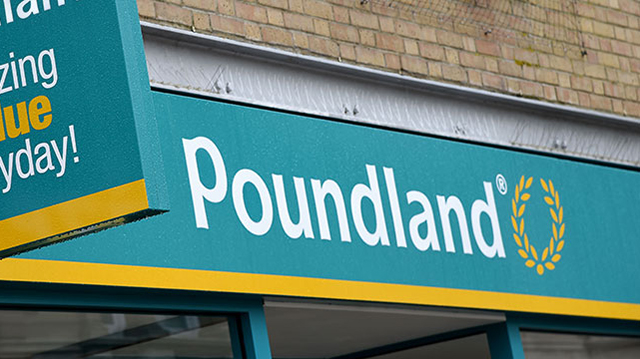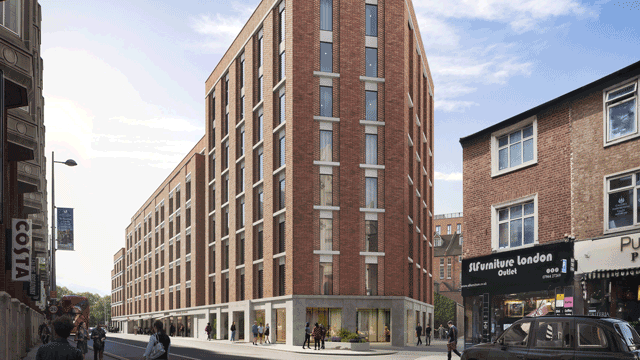Landsec last week dropped out of the running for the 3.3m sq ft regeneration of Euston Station, NW1, and the company has bought no new London development sites in more than five years.
EG data shows that the UK’s largest property company has sold nearly £3bn of London offices during the past five years (see below) and – with the exception of Thomas More Square, since sold – it has not bought any assets.
Landsec currently has just 800,000 sq ft of developable sites to play with in the city and the company admits it is now waiting for a market correction before taking on more office development risk. Its most recent wave of speculative development, triggered in 2012, is all but complete and large swathes have since been sold.
The development upsides from its two largest schemes (the Walkie Talkie at 20 Fenchurch Street, EC3, and redevelopments in Victoria, SW1) have now been mostly realised, while many assets – from Arundel Great Court, WC2, to Thomas More Square, Wapping, E1 – have been jettisoned.
Plenty of capital has been deployed into Landsec’s development pipeline over the past five years and its 6.5m sq ft portfolio has an average lease length of 10 years and an impressive void rate of just 3.3%.
Last month, it prelet its 469,000 sq ft 21 Moorfields, EC2, scheme on a 25-year lease to Deutsche Bank. That deal removed its largest individual piece of development exposure by size across its entire 16m sq ft portfolio. (It has less than 300,000 sq ft of development in the pipeline outside London).
Key changes
The company has also seen a number of key personnel changes in London and there have been six senior personnel departures in the past 18 months (see below).
So, given the limited upside in its portfolio through development and asset management, what does the future hold for the company?
Landsec’s biggest developable sites remaining are two in Southwark, SE1 – Red Lion Court and a collection of sites on Sumner Street – totalling around 250,000 sq ft, neither with planning consent, and the 100,000 sq ft Piccadilly Lights, W1, island site.
When he took the helm in 2012, chief executive Robert Noel committed himself to relatively high levels of debt, with a loan-to-asset value ratio of 40%, in order to fuel the initial speculative risk. That ratio has now been reduced to 22%, creating a balance sheet strength that would position Landsec well in a declining market.
But the decline has not come through yet. The company’s London investment director, Nick De Mestre, who joined from the energy sector four months ago replacing former investment director Tom Elliott, said the company had pursued a three-pronged strategy: de-gearing, selling unwanted stock and pursuing selected speculative development.
He said: “We have a very high-specification portfolio that leaves us in a position to say: ‘Whatever happens, we can hold off on investment for the time being’. We are well positioned for a drop in occupier demand and capital values.”
Analysts agree that Landsec needs a downturn to bring down land values to a level where the company can start to buy again. It is a waiting game: central London offices have shrugged off recent macro-economic shocks more fully than expected. And tellingly, Landsec was on the receiving end six weeks ago of 50% of London’s largest-ever single-asset deal at the Walkie Talkie, which sold for £1.3bn, at a staggeringly low 3.4% yield.
Where does the next Walkie Talkie come from? As well as Euston, the company has toyed with major new projects such as Elizabeth House, SE1, but has not had the full conviction in the market to push them over the line. In any case, such large-scale projects are not immediately deliverable into the next cycle.
Questions
John Forrester, chief executive, EMEA, at Cushman & Wakefield said for all major London office developers there are existential questions to consider.
“I don’t think I have ever known a time when there was so little high-quality land available to buy to restock a pipeline,” he said. “There are fewer developers overall, and it’s going to be a smaller playing field for pure office development.”
One former senior Landsec executive added that because of Landsec’s size, after the bottoming out of the market in 2011-12, and a protracted recovery, dented less by the Brexit vote than people expected, it was now struggling to “move the tanker” in a new direction.
De Mestre underlined that the company, much like other REITs, would never look at investments yielding 3-4% because of the low return they would provide to shareholders and said that for an investor-developer, there were times in the cycle when sitting on existing investment stock was preferable to development.
Landsec has certainly taken advantage of its income, paying out large dividends: the final dividend in May was 11.7p, increasing by 10.1% compared with the year before. This was supported by a 5.5% jump in profit to £382m, driven by new rents from completed developments and reduced interest costs, although its net asset value per share was down marginally by 1.2%.
While analysts praise Noel for the decision early in his tenure to bring forward offices in a fiercely supply-starved market, today, fresh development opportunities such as Euston or previously Victoria are few and far between. Landsec clearly wants to replenish its development pipeline but only real ingenuity or another crash are likely to achieve it.
The London sell-off
Landsec has sold more than £2.57bn of assets in the past five years. Here are its five biggest disposals:
*Landsec bought the other 50% stake of this asset in November 2014.
People moves
Departures: Six key members of Landsec’s London team have left since the start of 2016.
- Kaela Fenn-Smith, head of commercial
- Kiran Pawar, development director
- Tom Venner, development director
- Oliver Gardiner, head of development management
- Tom Elliott, head of investment
- Ben Ridgwell, head of asset management
New arrivals
- Nick de Mestre, head of investment
- Beth West, head of development
- Carissa Kilgour, workplace director
- Christine Clark, head of portfolio management
- Paul Langham, head of project management
- James Else, project director
- Ross Sayers, development director
- Russell Beresford, development director
To send feedback, e-mail nick.johnstone@egi.co.uk or tweet @n_johnstone or @estatesgazette











